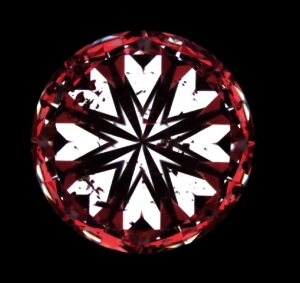- Joined
- May 3, 2001
- Messages
- 7,516
Garry H (Cut Nut)|1346967842|3263366 said:Hi Wink, thanks for the photo's and contribution.Wink|1346956625|3263256 said:Hopefully if you know of someone doing this you will out them to the public ridicule that they deserve.
Wink
Thanks to everyone else too.
I have been aware many years ago of vendor(s?) who were playing tricks. One I believe even used a series of photo's of a few stones and rotated, took different exposures and focus etc to get a big range of photo's for the least cost. I have not heard much about that company in years. Not even sure if they still exist.
I do not believe any current Pricescope vendors are doing anything wrong.
But if I may continue the hypothetical - what if the Hearts image was done the way AGS do theirs?
There are no inclusions, and can be no inclusions because the images are produced from a 3D scan of the outside of the diamond.
Is this acceptable?
It clearly shows the symmetry of the stone, which is what the H&A's is all about, and the report has the inclusion plot right there.
Now you are talking an entirely different question. In the first place, AGS does not produce a Hearts image on their reports, only the arrows image, and they make no pretense of that being an actual photo.
Putting an image of what the arrows should look like is totally different that doctoring up an actual image and saying that "Hey, this is what I am selling you" when they know that it is not.
You ask if making the image from a 3D scan is acceptable, I think it would be, BUT ONLY IF IT WAS CLEARLY STATED! The AGS reports state that this is a computer generated image so that there is not any chance of it being perceived of otherwise.
I know of at least one company that shows the AGS report, the reflector images (H&A viewer), the idealscope, the loupe photo, and the ASET scope image for every diamond. That way they can see the computer generated image on the report and the actual image in the ASET scope. In my opinion, providing ALL of the information on each stone is important both to the client who is looking at diamonds, and to the reputation of the vendor sharing that information. It takes a little effort, but it is what is actually needed to offer the best opportunity to the public to make an informed decision.
Wink




300x240.png)